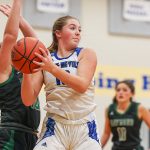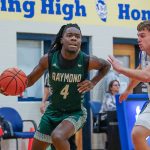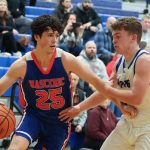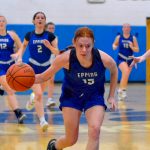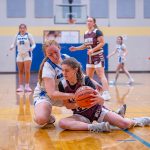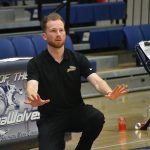Division IV Epping held D-II Raymond to just 27 points en route to a 43-27 victory on Monday night.
Leading the way for the Blue Devils was Laney McAniff and Anabelle Shumway with 10 points apiece. The Rams were paced by Sophie Huynh’s game-high 12 points.
With the win, Epping improves to 5-3, while Raymond falls to 0-7.
Check out the full gallery of the action by Jeff Criss of Perfect Photos…
[Epping coverage is sponsored by Tucker Construction]


